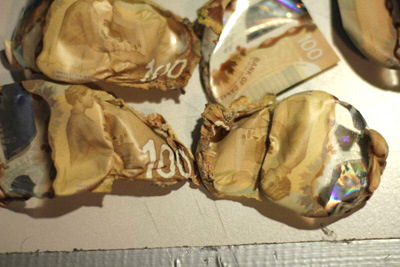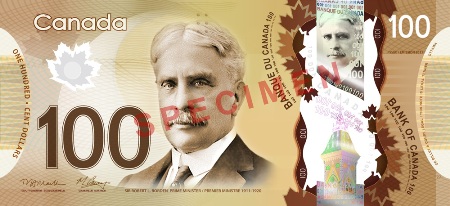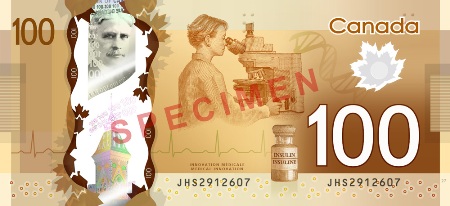 Besides the presentation of the new 5 euro yesterday the European Central Bank also had other news to report. The ECB said it removed 12,4% fewer counterfeit euro banknotes from circulation in 2012 than in the previous year. The bank withdrew about 531.000 forged notes compared with 606.000 in 2011.
Besides the presentation of the new 5 euro yesterday the European Central Bank also had other news to report. The ECB said it removed 12,4% fewer counterfeit euro banknotes from circulation in 2012 than in the previous year. The bank withdrew about 531.000 forged notes compared with 606.000 in 2011.
The 20 euro and 50 euro notes continue to be the most forged (together 82,5% of all discovered fakes). The 100 euro banknote was the third-most counterfeited denomination (13%). A complete breakdown of the numbers:
"When compared with the number of genuine euro banknotes in circulation (on average 14.9 billion during the second half of 2012), the proportion of counterfeits remains very low" according to the ECB.
The majority (97.5%) of counterfeits recovered in the second half of 2012 were found in euro area countries, with only around 2% being found in EU Member States outside the euro area and 0.5% being found in other parts of the world.
All has been revealed!
Mario Draghi, President of the European Central Bank (ECB), today unveiled the Europa series €5 banknote. The unveiling was the highlight of the opening of the “New Face of the Euro” exhibition, which is being held at the Archaeological Museum in Frankfurt am Main from 11 January to 10 March 2013.
The new €5 banknote has benefited from advances in banknote technology since the first series was introduced over ten years ago. It includes some new and enhanced security features. The watermark and hologram display a portrait of Europa, a figure from Greek mythology – and hence the name of this series of banknotes. An eye-catching “emerald number” changes colour from emerald green to deep blue and displays an effect of the light that moves up and down.
Short raised lines on the left and right edges of the banknote make it easier to identify the banknote, especially for visually impaired people.
These security features are planned to be included in all the new banknotes. They are easy to check using the “feel, look and tilt” method.
The new series has the same “ages and styles” design and dominant colours as the first series. The €5 will be the first banknote to be issued, starting on 2 May 2013. The other denominations, i.e. €10, €20, €50, €100, €200 and €500, will be introduced over the next few years, in ascending order.
The first series will initially circulate alongside the new banknotes, but will gradually be withdrawn and eventually cease to be legal tender. The date when this occurs will be announced well in advance. However, the banknotes of the first series will retain their value indefinitely and can be exchanged at euro area national central banks at any time.
Further information is available in a press kit and at www.newfaceoftheeuro.eu. This website also includes the “Euro Cash Academy”, a learning module which takes a playful approach to the new €5 and other euro banknotes. In addition, leaflets about the new €5 will be distributed to banks, shops and other businesses across the euro area in April 2013. All these measures should give the public and professional cash handlers an opportunity to learn about the new banknotes in good time and this should ensure a smooth introduction of the Europa series.
Another new security feature is the introduction of a security thread. The € symbol and the value of the banknote can be seen in tiny white lettering in that stripe:
Some downloads:
- Pictures (zip - < 1 MB)
- Press Kit (pdf)
- Footage of the new €5 banknote (design and security features) (zip - 357 MB)
- Footage of the production of the new €5 banknote (zip - 918 MB)
 A rather funny story in New York Magazine about Jack Lew. In particular his signature. You might ask: what does it matter what the signature of the current chief of staff of president Obama looks like? Well, because mr. Lew is probably going to be the next Treasury Secretary of the United States and his signature will appear on the new dollar banknotes. So yes, it matters a little bit more than the average signature. What's so weird about it? Check for yourself in this photoshopped picture:
A rather funny story in New York Magazine about Jack Lew. In particular his signature. You might ask: what does it matter what the signature of the current chief of staff of president Obama looks like? Well, because mr. Lew is probably going to be the next Treasury Secretary of the United States and his signature will appear on the new dollar banknotes. So yes, it matters a little bit more than the average signature. What's so weird about it? Check for yourself in this photoshopped picture:
He wouldn't be the first Treasure Secretary who would change his John Hancock for his new job. The current Secretary Timothy Geithner also had to change his signature when he took up the job. You can view the before and after version in this interview. To see if any of the previous signatures were also a bit weird or ugly, you can view the entire list of signatures here.
I personally think Lew's signature is pretty cool!
Update 11-1-2013: President Obama jokes about the signature at the press conference announcing Lew's candidacy. He 'promises' that Lew will "make at least one letter legible in order not to debase our currency".
Update 12-1-2013: It just keeps on getting better. You can now see how Jack Lew would sign YOUR name by visiting this Jack Lew Signature Generator. LOL.
Set your clocks to 16:30 CET when the new 5 euro will be unveiled by Mario Draghi of the ECB.
What is the deal with Canada's polymer money? For some reason it keeps on getting bad press and nasty comments by angry users. Some of the recent articles I wrote or gathered:
- There was the issue with the naked women on the 20 dollar which a few people found offensive for some reason. They turned out to be part of a statue commemorating fallen Canadian soldiers in France. Never let the facts get in the way of a good story, I guess.
- Melting banknotes was the next issue. Polymer notes that melt in your hand, not in your mouth. Or something like that.
- Now we also have angry shopowners who complain that some vending machines don't accept the polymer notes. There are about half a million machines in Canada that need reprogramming and the Canadians have managed to do so with about 50% of them. Nice job, considering that dummy's of the new banknotes have been sent out months ago.
- Is that all? No, the new banknotes are also KILLING US with their germs! But wait, were there no germs on the old notes? Sure, but the polymer notes stick together so when people need to separate them, they lick their fingers. More so than with the old notes it seems. And so they infect the whole world with their nasty germs. If you're scared after reading this, try looking at your keyboard and mouse under a magnifier. It's generally speaking safer to lick a toilet seat than touch your co-workers computer stuff.
If you're interested in a more positive story on polymer notes, I suggest you look at this nice article from Scientific American that provides a bit of history and background on these little germ-infested, melting and sticky pieces of plastic.
 I just saw this great numismatic product mentioned at banknotenews. It's a special currency set commemorating the 150th anniversary of the United States Bureau of Engraving and Printing.
I just saw this great numismatic product mentioned at banknotenews. It's a special currency set commemorating the 150th anniversary of the United States Bureau of Engraving and Printing.
This information is from their website:
This limited edition two-note set features a Series 2009 $2 note from the Federal Reserve Bank of New York and a Series 2009 $5 note from the Federal Reserve Bank of Chicago. The Series 2009 $2 note bears a serial number beginning with "2012," to commemorate 150 years of pride, craftsmanship, and innovation. The Series 2009 $5 note begins with serial number "1862," to symbolize the origin of the BEP. For each set, the last four digits of the serial numbers on the $5 and $2 notes match.
This exquisitely crafted set includes a 52 page booklet, "150 Years of Pride, Craftsmanship, and Innovation." This informative booklet traces the Bureau of Engraving and Printing’s rich history and evolution, and includes a certificate authenticating the enclosed notes as genuine United States currency.
Each note is protected by a clear, acid-free polymer sleeve and encased in an attractive folder.
Drawing: All customers who purchase the 150th Anniversary Currency Set during the first month of release will be entered into a drawing to win the opportunity to purchase one of the first 150 sets based on serialization. These first 150 sets will feature personally signed $2 and $5 notes by Treasurer of the United States Rosie Rios. Customers will be enrolled into the drawing equal to the number of sets purchased during the one month enrollment period (December 11, 2012 – January 10, 2013). A quantity restriction of two sets will be imposed for drawing winners. Customers who win the drawing will not be permitted to return previously purchased sets in lieu of any set won and purchased via the drawing. Drawing winners will be contacted after January 11, 2013, via phone/email. Drawing winners are not obligated to purchase the signed 150th Anniversary Currency Sets.
The 150th Anniversary Currency Set is limited to 10,000 total units.
Bulk pricing is available for the 150th Anniversary Currency Set at a price of $44.95 per unit for quantities of 10 or more.
Sounds like a great gift to me!
 The Bangko Sentral ng Pilipinas (BSP) has recently issued an overstamped note to commemorate 100 years of Masonry in the Philippines. This note was originally available only in sheets of four uncut notes packaged in a folder. Since then, the BSP has begun issuing individual notes into circulation.
The Bangko Sentral ng Pilipinas (BSP) has recently issued an overstamped note to commemorate 100 years of Masonry in the Philippines. This note was originally available only in sheets of four uncut notes packaged in a folder. Since then, the BSP has begun issuing individual notes into circulation.
There have been several commemorative issues of this 100 Peso note. The list can be found here.
 And after Somalia now Angola has also announced it will postpone the introduction of the new 5000 and 10.000 kwanza notes. They were initially scheduled for January 2013 but they will be issued later this year.
And after Somalia now Angola has also announced it will postpone the introduction of the new 5000 and 10.000 kwanza notes. They were initially scheduled for January 2013 but they will be issued later this year.
You can read more information about these notes in this post I wrote last month. A translation of the article mentioned above can be found here.
 A story from war torn Somalia today. The Somali federal government announced that it would postpone the introduction of new Somali Shilling. These banknotes were printed in Sudan and were ordered by the previous Transitional Federal Government. The introduction has been postponed to "a later date".
A story from war torn Somalia today. The Somali federal government announced that it would postpone the introduction of new Somali Shilling. These banknotes were printed in Sudan and were ordered by the previous Transitional Federal Government. The introduction has been postponed to "a later date".
This probably has something to do with the lack of centralized financial institutions in Somalia which has been plagued by civil war and unrest for so many years. Currently the only Somali currency in use is the 1000 Shilling note first issued in 1990 and as a second issue in 1996. Somaliland and Puntland, which are autonomous parts of Somalia, have introduced or tried to introduce new banknotes but the central government hasn't. For many years you couldn't even speak of a central government. The Somaliland currency is not internationally recognized (though the region is recognized as an autonomous region). Puntland announced last year it would introduce its own currency but hasn't yet. The lack in Somali currency even prompted local warlords and businessmen to print their own currency. The US dollar is also widely used in Somalia.
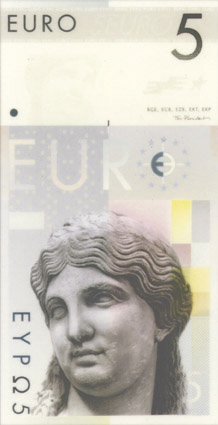 That question will be answered next week when on 10 January 2013 the ECB will unveil the design of the new 5 euro banknote. Don't expect to many changes though. As the ECB clearly states on the website for the new Europa series:
That question will be answered next week when on 10 January 2013 the ECB will unveil the design of the new 5 euro banknote. Don't expect to many changes though. As the ECB clearly states on the website for the new Europa series:
Like the first series, the new banknotes will feature the “ages and styles” design and show windows, doorways and bridges.
So in other words: the same (boring) design we have all come to love/hate (choose for yourself). The current banknotes are designed by Robert Kalina of the National Bank of Austria. For the second series the ECB has asked Reinhold Gerstetter to update the design. He is known for his work on the last series of German Marks (example of his 200 Mark, P47) and on the last series of Spanish Pesetas.
But what most people don't know, is that Reinhold Gerstetter has already designed euro banknotes years ago. The contest in which Robert Kalina was chosen as the winner to design the currect euro banknotes, also had several other contestants. One of them was Reinhold Gerstetter. He designed two different series for this competition. You can find the first series here and the second series here. A funny coincidence: the face of his 5 euro design (photo on the right) shows the image of Europa, which is also the leading theme for the second series of the euro banknotes.
Will the new banknotes look anything like his original design? Probably not, but we'll know for sure next week.
>> Link: All the original entries for the euro design competition in 1996
 The central bank of Morocco has issued the new 25 dirham. According to this press release posted on 28 December 2012 (in french, or in the english translation by Google) 4.2 million notes have been issued to commemorate the 57th anniversary of Morocco's independance and also the 25th birthday of the inauguration of Dar-Assikkah (Mint).
The central bank of Morocco has issued the new 25 dirham. According to this press release posted on 28 December 2012 (in french, or in the english translation by Google) 4.2 million notes have been issued to commemorate the 57th anniversary of Morocco's independance and also the 25th birthday of the inauguration of Dar-Assikkah (Mint).
A limited series of 200.000 notes numbered 00001000 to 20000000 have been reserved for collectors. The new banknote is the first to be printed on Durasafe. More information can be found in this post.
A nice article in the German newspaper Die Welt about the rigorous tests banknotes are put through before they're issued. If you click this link, the german article is automatically translated in english. If you want to read the original text in german, click here.
 Do you sometimes have that feeling that you've made something really pretty like a painting of your dog and after it's done, somebody comes along and mentions that you've forgotten to paint a tail? That must have been the feeling the Bermuda Monetary Authority (BMA) had when they unveiled their new 50 Dollar banknote with beautiful pictures of local birds on it.
Do you sometimes have that feeling that you've made something really pretty like a painting of your dog and after it's done, somebody comes along and mentions that you've forgotten to paint a tail? That must have been the feeling the Bermuda Monetary Authority (BMA) had when they unveiled their new 50 Dollar banknote with beautiful pictures of local birds on it.
Local birds? Not according to ornithologist David Wingate who stated that the bird on the banknote was in fact NOT the local white-tailed tropicbird but rather a red-billed tropicbird. So what did the BMA do? Did they destroy all the wrong banknotes and quickly issued the right ones? No. They stated that it was indeed the wrong bird but that this one looked much nicer against the background than the right bird...
I had the exact same feeling with our former dutch banknote. Instead of a firehouse, they should've put the Eiffel Tower on it. It's not a dutch building but that's just a minor detail of course.
Apparently the BMA had a change of heart because revised banknotes have been issued. This time with the right local bird on it and with a slightly different colour scheme. The prefix of the serial number has also been changed. The issue date for the old and new banknote remains the same: 1 January 2009.
On the left is the old banknote and on the right the revised version.
Source
 As announced in this previous post, Fiji has issued its new banknotes yesterday 2 January 2013. The colourful notes have all been issued except for the 5 Dollar banknote. This is the only polymer note in this series and has been delayed until April for unknown reasons. But no worries: the Fiji people have plenty to admire in their new money.
As announced in this previous post, Fiji has issued its new banknotes yesterday 2 January 2013. The colourful notes have all been issued except for the 5 Dollar banknote. This is the only polymer note in this series and has been delayed until April for unknown reasons. But no worries: the Fiji people have plenty to admire in their new money.
More information and images can be found in this post.
 That's the question Canadians are asking when reports surfaced last summer of banknotes which had melted because of exposure to heat. The notes in question were of course the new polymer notes. An woman from Ontario claimed that a few 100 Dollar bills melted together when they were stashed in her car near a heat source. Another woman claimed the same notes had melted together during a heatwave.
That's the question Canadians are asking when reports surfaced last summer of banknotes which had melted because of exposure to heat. The notes in question were of course the new polymer notes. An woman from Ontario claimed that a few 100 Dollar bills melted together when they were stashed in her car near a heat source. Another woman claimed the same notes had melted together during a heatwave.
The Canadian Press ordered internal documentation on this case from Canada's central bank. Did this provide the answer to the 'burning' question? Not quite: "In response to a formal request from The Canadian Press, the Bank of Canada released 134 pages of internal records - almost completely blanked out."
"The bank stands by its statements made this summer that polymer bank notes cannot be affected by the types and levels of heat as has been suggested in last summer's news reports, and has seen no evidence to the contrary," bank spokesperson Jeremy Harrison said. He noted the bank had performed "extensive and rigorous tests" prior to issuing the notes, including exposing them to extremes of 140 C and -75 C.
The central bank blanked out most of the texts because "Disclosing details of behind-the-scenes discussions about tales of melting banknotes could endanger national security or international relations". But the bank might have a point though regarding the durability of the new polymer notes:
Since the polymer series began circulating in November 2011, there were 232 cases of mutilated polymer notes submitted to the bank through last October, the bank says. That compares to an average of 3,000 total cases of mutilated notes per year.
The note in question:
« Vorige Pagina |
Toon berichten 1066-1080 van 1227 |
Volgende Pagina »
 Besides the presentation of the new 5 euro yesterday the European Central Bank also had other news to report. The ECB said it removed 12,4% fewer counterfeit euro banknotes from circulation in 2012 than in the previous year. The bank withdrew about 531.000 forged notes compared with 606.000 in 2011.
Besides the presentation of the new 5 euro yesterday the European Central Bank also had other news to report. The ECB said it removed 12,4% fewer counterfeit euro banknotes from circulation in 2012 than in the previous year. The bank withdrew about 531.000 forged notes compared with 606.000 in 2011.

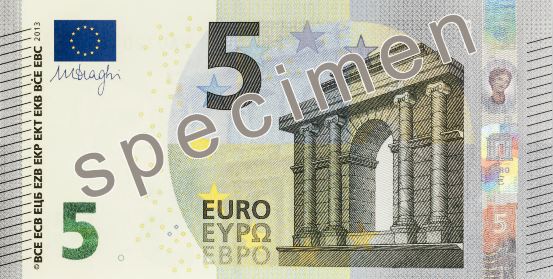
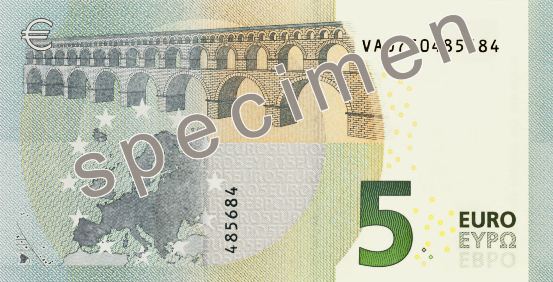
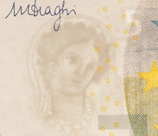
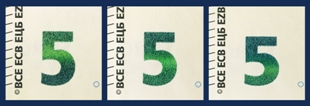
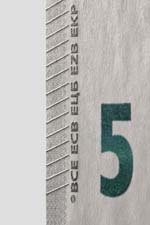
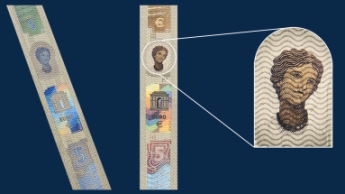
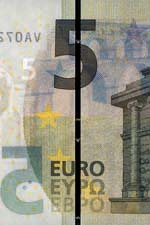
 A rather funny story in
A rather funny story in 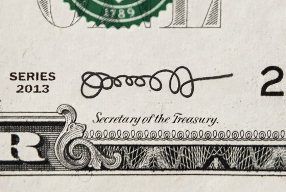
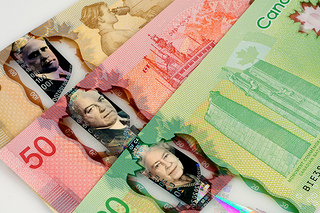
 I just saw this great numismatic product mentioned at
I just saw this great numismatic product mentioned at 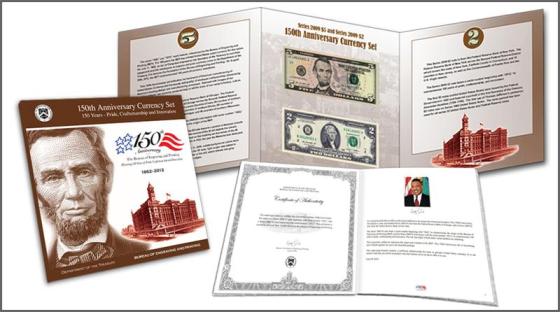
 The
The 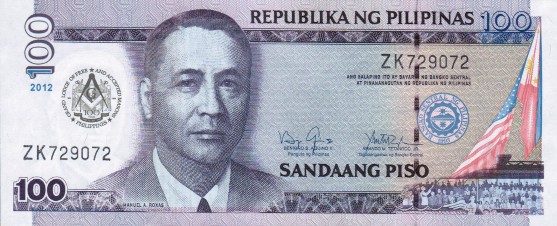
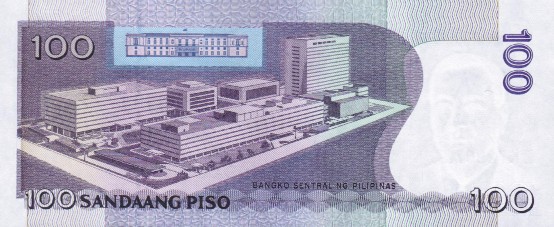
 And after
And after  A story from war torn Somalia today. The Somali federal government
A story from war torn Somalia today. The Somali federal government 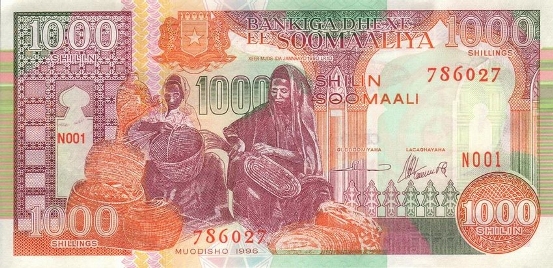
 That question will be answered next week when on 10 January 2013 the
That question will be answered next week when on 10 January 2013 the  The
The 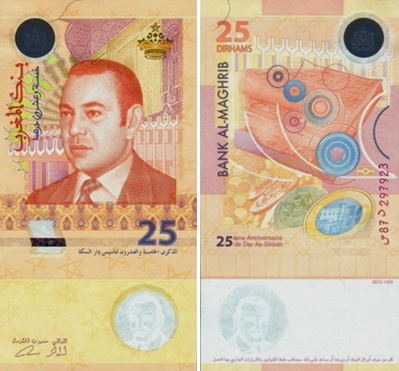
 Do you sometimes have that feeling that you've made something really pretty like a painting of your dog and after it's done, somebody comes along and mentions that you've forgotten to paint a tail? That must have been the feeling the
Do you sometimes have that feeling that you've made something really pretty like a painting of your dog and after it's done, somebody comes along and mentions that you've forgotten to paint a tail? That must have been the feeling the 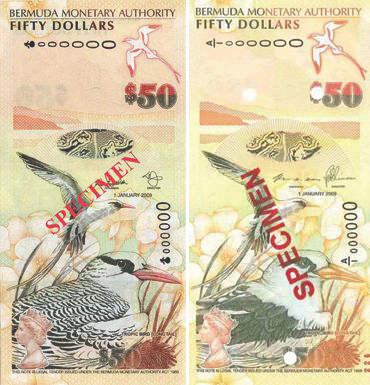
 As announced in this
As announced in this 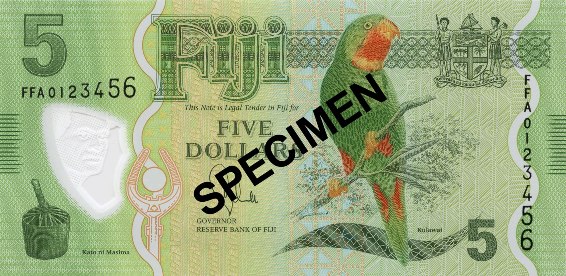
 That's the question Canadians are asking when
That's the question Canadians are asking when 